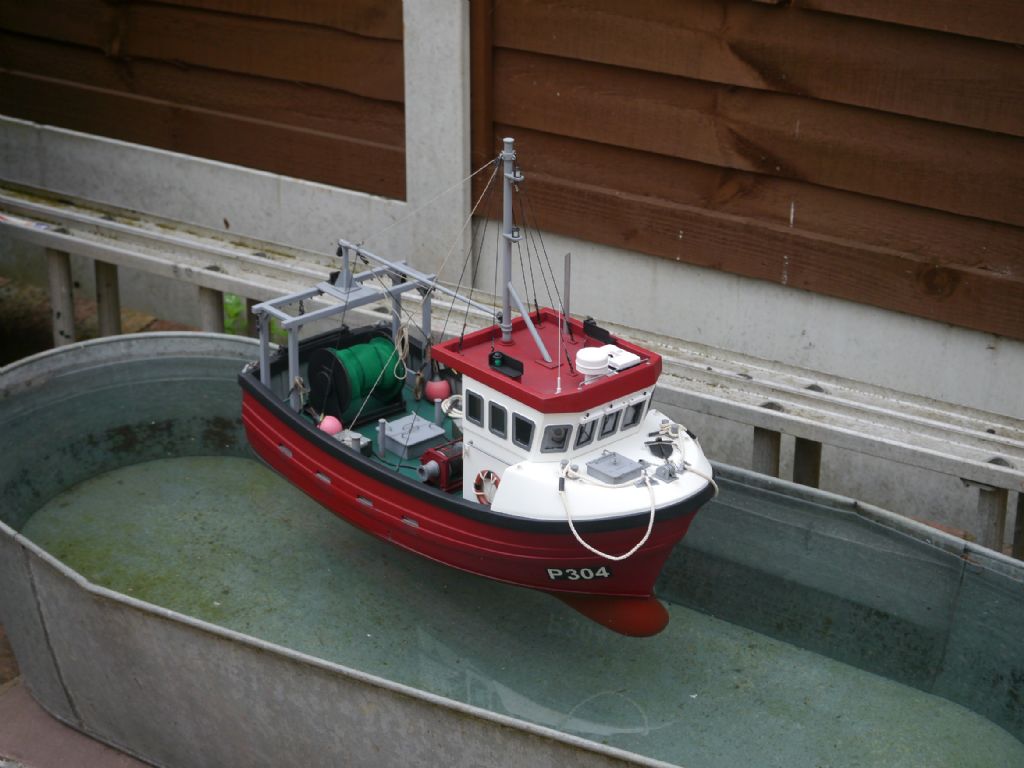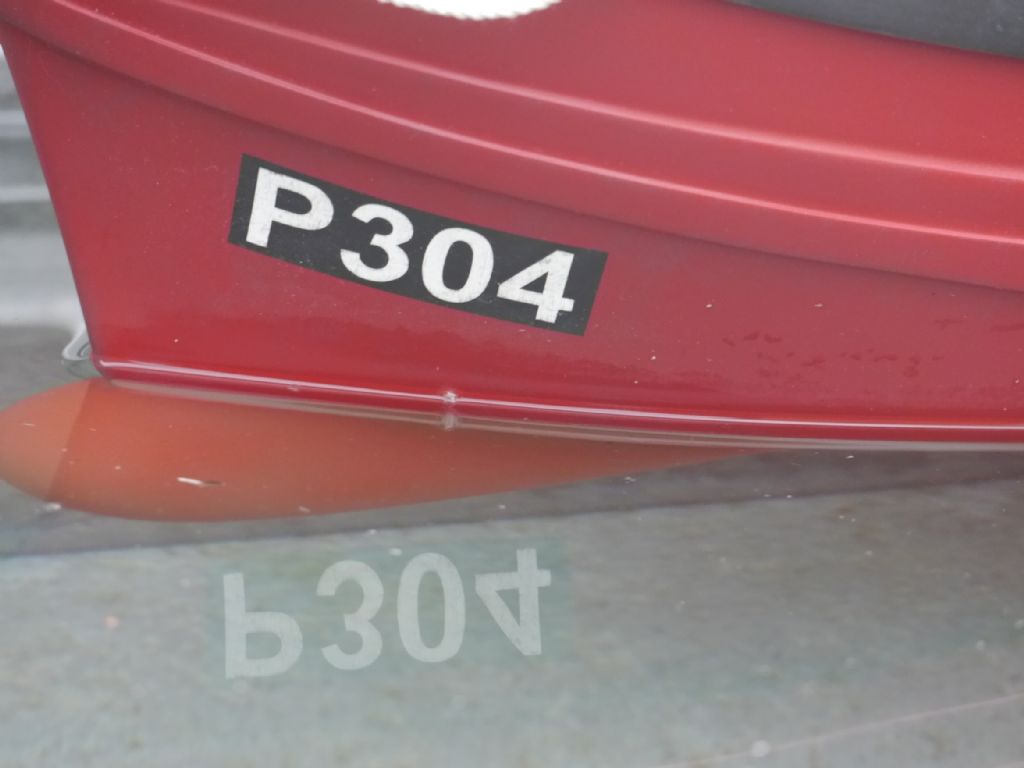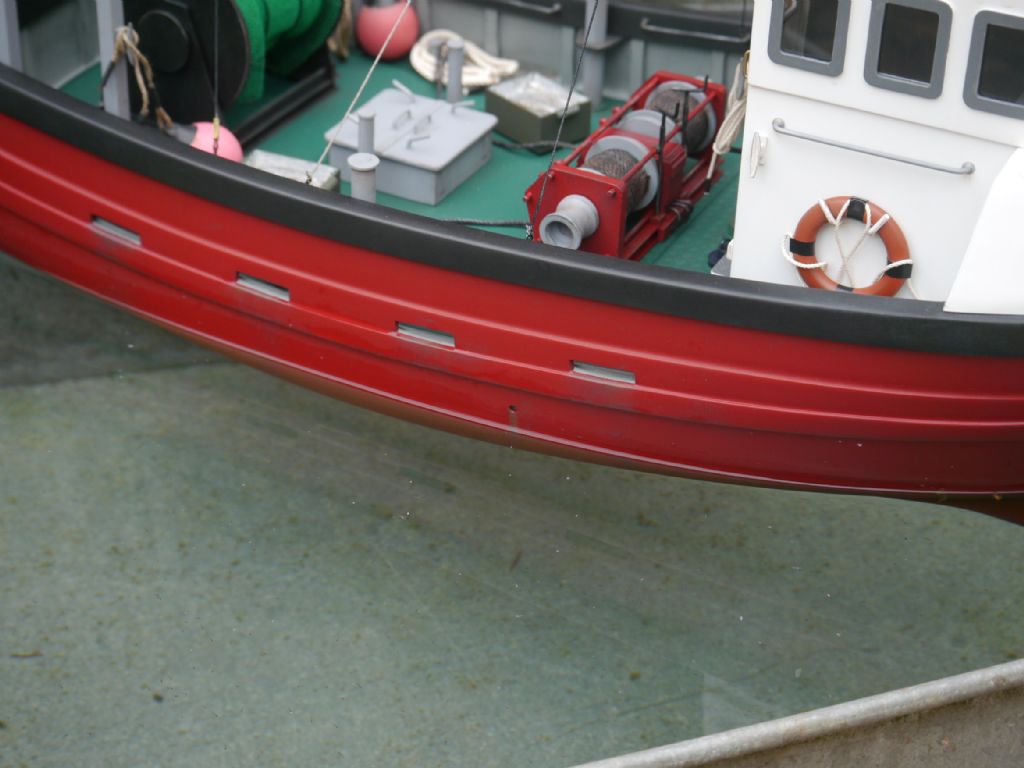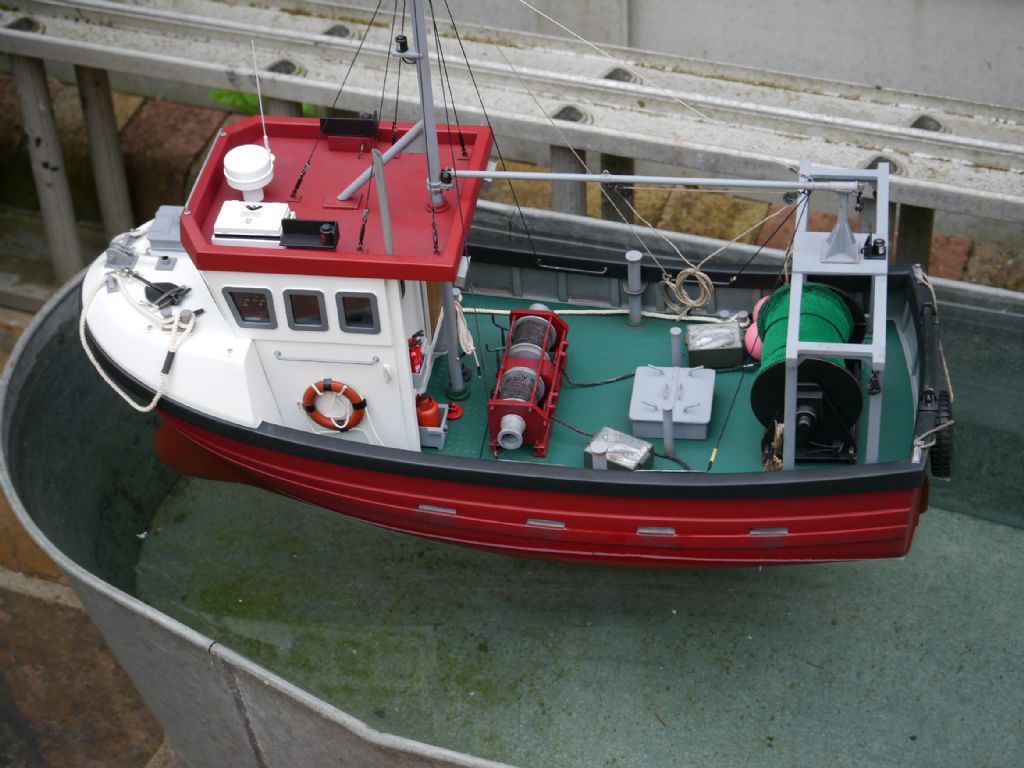
One or two of you are aware that this new model of mine had an unfortunate maiden voyage in mid-July when it capsized. This was in spite of it being ballasted correctly to the scale waterline and although a bit roly-poly in the test tank, had recovered well enough to remain upright. On our Fishers Green pond it proved quite a handful on the maiden voyage, until it drove the port freeing ports underwater and the resultant volume of H2O) on the deck meant it did not recover to a vertical position. Thanks to prompt action by fellow members, it was speedily recovered and indeed was undamaged with nothing lost at all, so that was the first bit of luck.
Analysis at home concluded:
It was top-heavy, which is obvious really.
The 950kv Turnigy brushless motor, although turned-down to 35% of its maximum speed was still far too powerful and torquey.
The propeller was perhaps too big.
It certainly needed a liferaft for the non-existent crew!
Well, by 5pm on that fateful day, this inshore trawler was ready for sea again (although still awaiting the liferaft), but these pictures are from 2 weeks later.
3.5lbs of ballast had been added, making it float deep by approx. 3.5mm, but more important the C of G is now much lower.
A 300kv motor from Alistair Engel (the German submarine guy) has been installed which on a 7.4v LiPo produces just 2220 rpm max.
A smaller propeller has been fitted.
A four man liferaft container for the non-existent crew was made using dimensions ex-Internet.
Not in these pictures from 28th July are the trawl boards and minor additional rigging.
Yes, it floats slightly deep now, but that doesn't notice when on the water and I can always add a 5mm boot topping if I get the urge. Performance on the water is now perfectly fine and controllable and a subsequent continuous 2 hour sailing session resulted in no water inside, no significant rolling on turns and a dry boat in average conditions.
So, the point of this little homily is that we (I) don't always get it right first time, but on the first ill-fated voyage, as soon as the problems became evident, about 5 seconds after leaving the pond's bank, it should have been recovered rather than pressing-on for another 10 minutes with an ever more poorly handling model. The safest place for a model boat in such circumstances is on the stand!


 Paul F.
Paul F.








